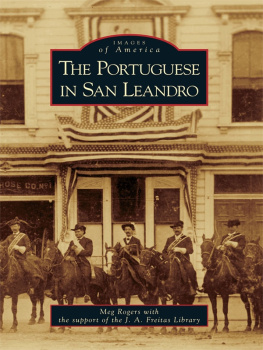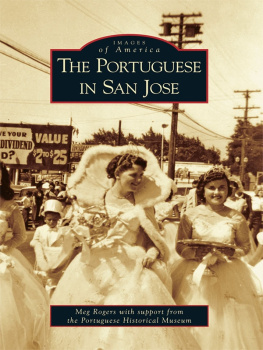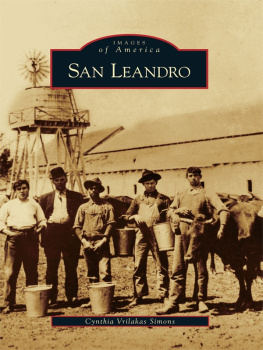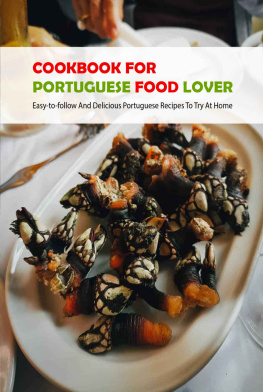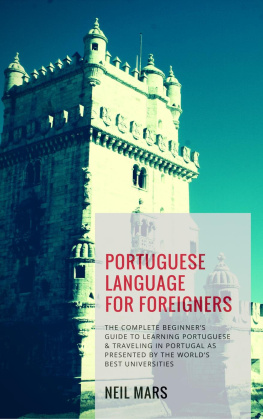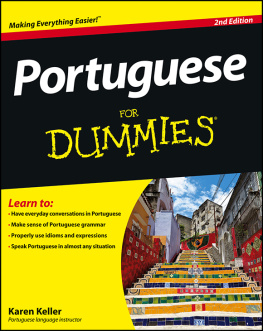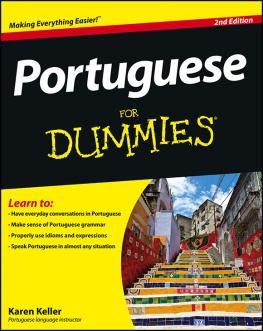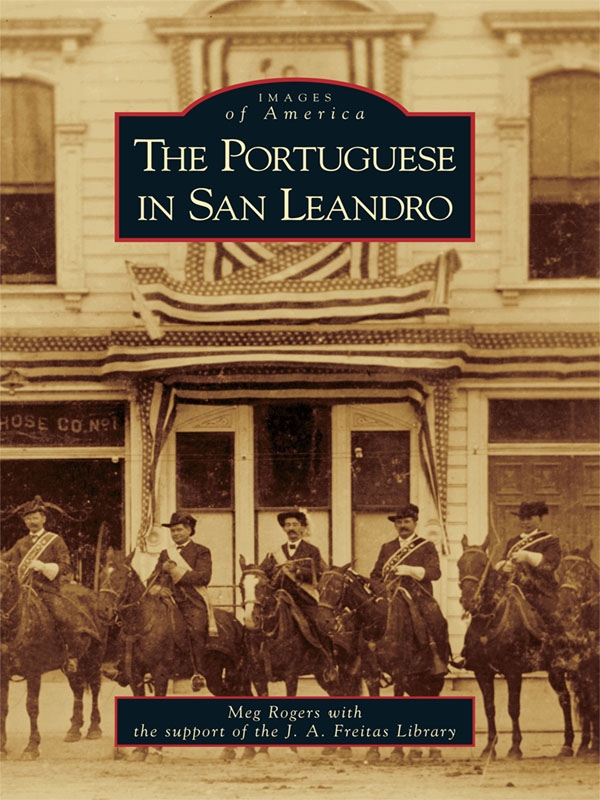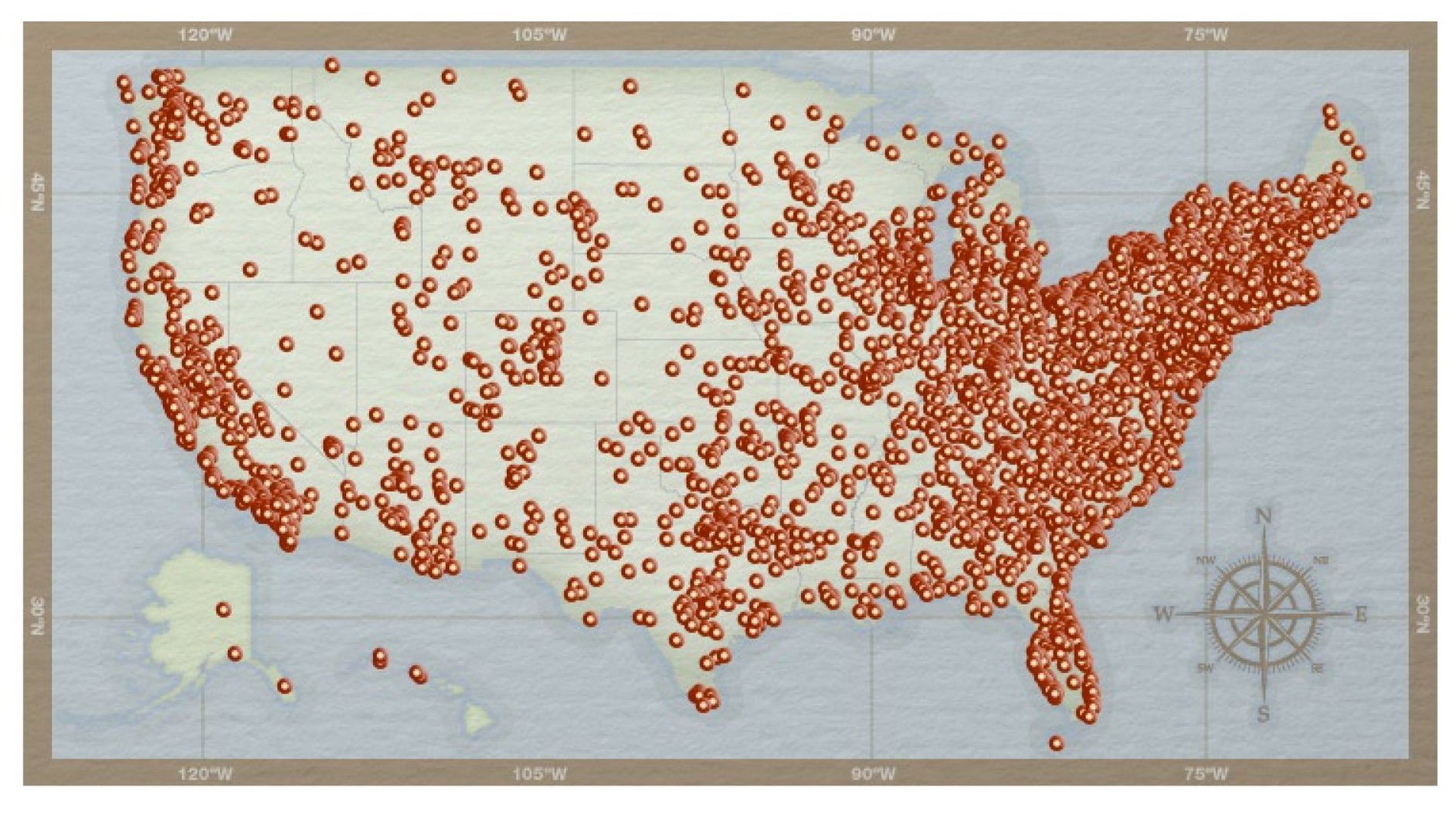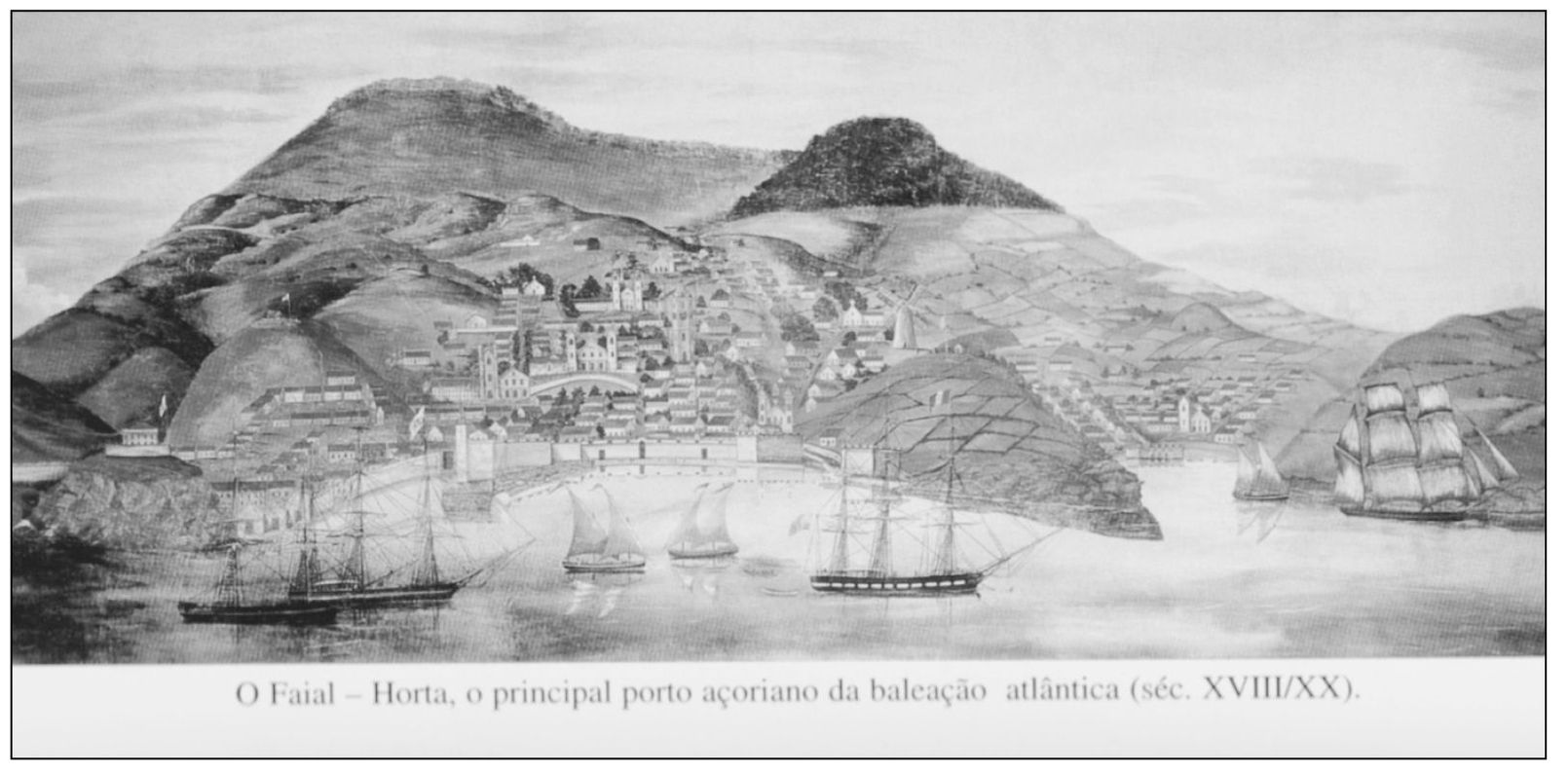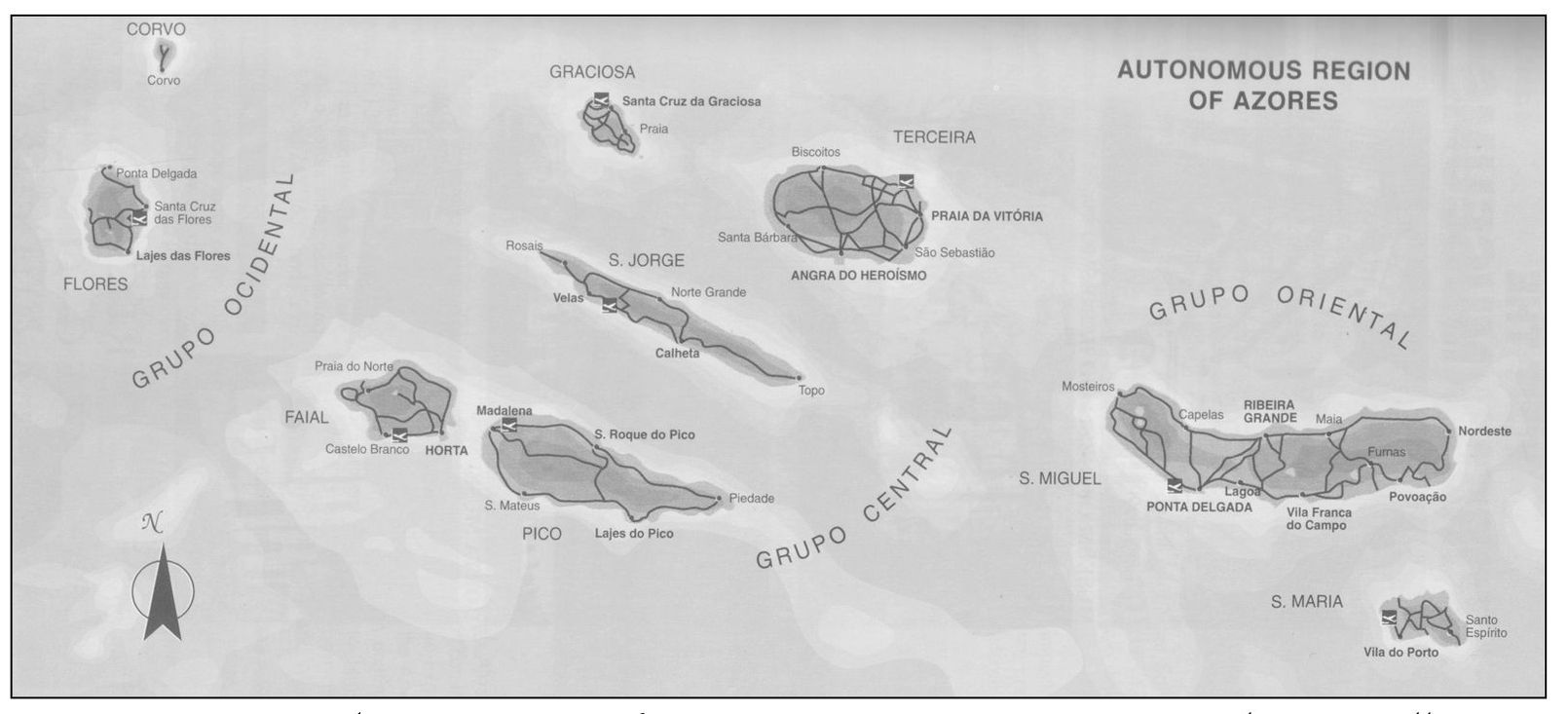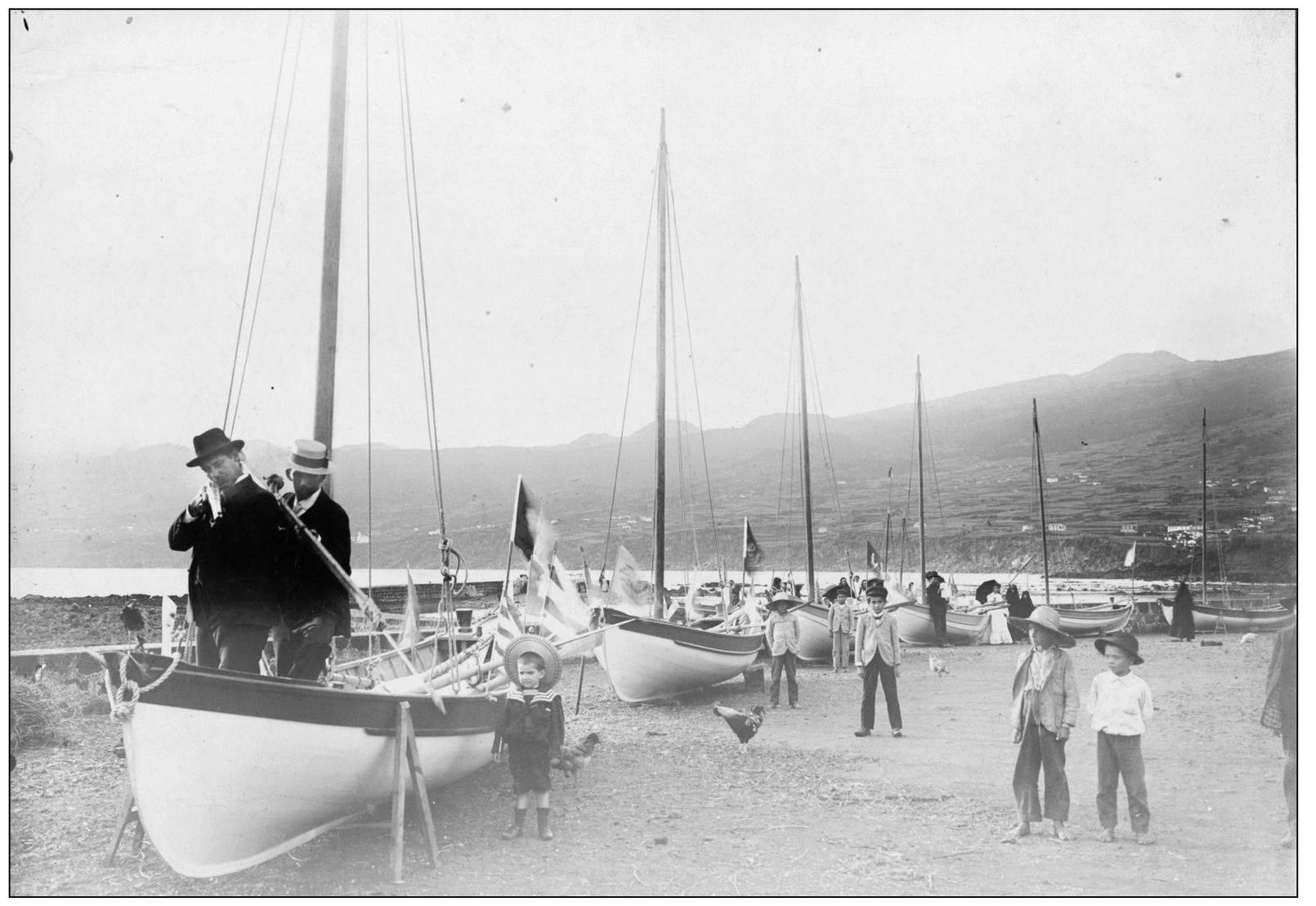While writing Arcadias Images of America: The Portuguese in San Jose , I found numerous references to the Portuguese community of San Leandro. Soon Carlos Almeida welcomed me to the J. A. Freitas Library (JAF) and the Portuguese Union of the State of California (UPEC) Cultural Center to research the Portuguese contributions to the tiny hamlet of San Leandro on the San Francisco Bay.
The book is a tapestry of personal narratives from first-, second-, and third-wave Portuguese immigrants interwoven with material from Portuguese fraternal societies and excerpts from Portuguese Immigrants: The Centennial Story of the Portuguese Union of the State of California and Portuguese Heritage Publications of California; images used from this book are cited Portuguese Immigrants . I am grateful to all those in the community who opened up their places of business to meet with me, including Carlos Almeida from the J. A. Freitas Library and the librarians in the history room of the San Leandro Public Library. Images from the library are cited with the initials SLPLHPC. I would like to thank Katarina Ortega for her layout and formatting suggestions; my editor Kelly Reed for her assistance and support; my copy editor Lauren Bobier for her attention to detail; Devon Weston for her encouragement during the initial stages of the project; and Anne Tate for her assistance in the projects completion. I am especially grateful to Carlos Almeida from Uniao Portuguesa do Estado da California, who knows every book in the J. A. Freitas Library like the back of his hand. To any who submitted images or notations that do not appear here, I look forward to future publications. A portion of the proceeds from the sale of this book will be donated to the J. A. Freitas Library.
BIBLIOGRAPHY
Almeida, Carlos. Portuguese Immigrants: The Centennial Story of the Portuguese Union of the State of California . UPEC, 1978.
Almeida, Carlos, ed. Centennial Souvenir Album IDES . San Leandro, CA: IDES of Alvarado St., Inc., 1982.
Almeida, Carlos. San Leandro Recollections, San Leandro: Historical-Centennial Committee, 1972.
California History Center. Saga of San Leandro, Studies in Local History, Vol. 13, 1973.
Furtado, Antonio da Rosa. Acores e o Vulcao dos Capelinhos . New Bedford, MA: DuMont Printing, 1957.
Furtado, Antonio da Rosa. Acores, Ilhas de Sonho . Self-published, 1959.
Galloway, Brent. A San Leandro Centennial Album (177218721972) . Honor Publications, A Division of Windsor Publications., Inc., 1972.
Graves, Alan Ray. The Portuguese Californians: Immigrants in Agriculture. Portuguese Heritage Publications of California, Inc., 2004.
Galvan, Andy. Photograph Collection. San Leandro Photograph and Document Collection. San Leandro Public Library.
Goulart, Tony P. The Holy Ghost Festas: A Historic Perspective of the Portuguese in California . Portuguese Heritage Publications of California, Inc., 2003.
Ilene, Herman. San Leandro Cherry Festivals of the Past . San Leandro: City of San Leandro, 1986.
London, Jack. The Valley of the Moon . New York: MacMillan Company, 1913.
Oakland Tribune . Assorted clippings prior to 1920.
Shaffer, Harry E. A Garden Grows in Eden . San Leandro: San Leandro Historical Centennial Committee, 1972.
Stuart, Reginal R. San Leandro: A History . San Leandro: First Methodist Church, 1951.
Vaz, August Mark. The Portuguese in California . San Francisco: The Filmer Brothers Press, 1965.
Find more books like this at
www.imagesofamerica.com
Search for your hometown history, your old
stomping grounds, and even your favorite sports team.
One
PUTTING DOWN ROOTS
AZOREAN EMIGRANTS LEAVE FAIAL . Here Azorean emigrants leave Faial, Azores. At the turn of the century, the lure to cross the sea was powerful because Azores offered little in the way of economic or educational opportunity. A steady stream of Portuguese immigrants poured in from the Azores and mainland until 1924 when the INS enacted a quota system allowing only 440 Portuguese immigrants into the United States each year. John F. Kennedy thought the quota system was an injustice, and he fought for its elimination; he wanted immigration to be based on skill sets needed in America and not ethnicity. In 1964, after Kennedys death, President Johnson signed Kennedys bill lifting the unfair European immigration quotas. According to a study by Harvard professor Dr. Francis M. Rogers in 1970, there were 114,931 immigrants born in Portugal and the Azores residing in the United States. (Carlos Almeida.)
HORTA PRINCIPAL PORT, FAIAL, AZORES. This painting by Benjamin Russell and Caleb Purrington depicts ships departing Faial. Portuguese immigrants journeyed across the Atlantic aboard whaling vessels bound for the New World. Life aboard the whaling vessels was dangerous and dreary with long hours and poor rations. Captains took advantage of the young Azorean workers who signed on with themso much so that Azorean whalers often jumped ship to plow the fields of Hawaii and California. After the Gold Rush, San Leandro became one of the principal Portuguese settlements in the New World where immigrants worked on small farms and dairies. (Mar de Baleias by Joao Alfonso and Portuguese Immigrants .)
THE AZORES. More than 80 percent of Portuguese immigrants to San Leandro originally came from the Azores Islands, a mid-Atlantic chain 814 nautical miles out to sea from mainland Portugal. Platos Chrythias describes the nine islands in the Azorean archipelago as peaks of mythical Atlantis. The Seven Cities Lake of San Miguel has two lakes in an ancient crater. Legend says when an Atlantean princess died, her shoes fell into one lake, which turned green, and her dress slipped into the other lake, which turned blue. (JAF.)
AZOREAN WHALERS, 1880S . This picture depicts the whaling fleet of Lages do Pico. One whaler holds his harpoon down while another points his short barrel shotgun at the camera. Many early Portuguese settlers made their way to California through the whaling industry. (Tony Wilson and Carlos Almeida.)
SAN MIGUEL WHALING STATION, 1920S. Factory workers cut a whale into vertical pieces before extracting its oil. Whale flesh was first put into cauldrons six feet in diameter, and then a wood fire was lit below, causing the fat and oil to rise to the top. Whale hunting supported many different industries: the oil was harvested for lighting, the teeth turned into ivory jewelry and artwork, and the remainder was used for pharmaceutical purposes. ( Portuguese Immigrants .)

